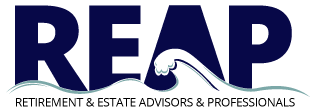Your Year-Round Tax Planning Check-Up
From: www.marinerwealthadvisors.com
Keep your tax planning on track
Tax planning isn’t just a springtime activity. Just like going to the doctor for annual check-ups is a crucial part of maintaining your health, so too are annual check-ups for your tax planning. Your needs evolve from year to year, so the following checkpoints can help you ensure your tax planning stays on track.
1. Are you maximizing your health savings account contributions?
If you have a high-deductible health insurance policy, you are eligible for a health savings account (HSA). These accounts are triple tax free. First, your contributions reduce your taxable income in the year you make them. Second, the interest, dividends and capital gains from these accounts are free from tax. And third, withdrawals from these accounts used to pay for qualified medical expenses are also tax free. For the 2024 tax year, HSA contribution limits are $4,150 for individuals and $8,300 for families. Those who are 55 and older can contribute an additional $1,000 in catch-up contributions.1 Because of the compounding benefits of HSAs, it’s advantageous to assess your current contributions and how you might be able to increase them throughout the year.
2. Have you made contributions to a traditional IRA?
Evaluating your traditional IRA contributions is another year-round tax planning checkpoint. For traditional IRAs, contributions are not taxed until you take a distribution. Contributions to traditional IRAs may be fully or partially deductible based on income and your filing status. Single taxpayers covered by a workplace plan and earning above $83,000 can’t deduct contributions. For married couples where a workplace plan covers both spouses, deductions disappear above $136,000.
Maximizing traditional IRA contributions can be a beneficial strategy for certain people. Meet with your wealth advisor to discuss the right approach for you.
3. How much are you contributing to a qualified retirement plan?
Contributions to qualified retirement plans, such as 401(k)s, 403(b)s and 457s, can reduce your taxable wages. First, ensure you’re taking advantage of any employer-match programs. Then, if you want to maximize your pretax and retirement savings, look to contribute as much as you can (up to $23,000 for 2024 and up to $30,500 for those over 50).
4. Do you need to adjust your W-4 withholdings?
If you work a W-2 job, you’ll need to provide an Employee’s Withholding Certificate, Form W-4, to your employer. This form tells your employer how much federal income tax to withhold from your paycheck. Many people neglect to update this form each year, but it can make a big difference come tax time. If you filed a tax return this spring and owed money, you may want to have additional withholdings from your paycheck. However, if you received a large refund, think about withholding less money from your paycheck. Consider using this extra money as an investment in a high-yield savings account, money market account, savings bond or other investment vehicles.
5. How are you structuring your charitable contributions?
Cash contributions represent the most common charitable contribution method, but other methods may offer even more tax advantages. Here are some you might consider:
• Donating appreciated assets – Donating assets such as securities, artwork or real estate to qualified charities allows the donor to take a deduction for the
full, fair market value of the gifted assets while not being subject to capital gains taxes if those assets were held for more than a year.
• Establishing a donor-advised fund (DAF) – Donors who establish and transfer assets to a DAF receive an immediate tax deduction in the year donated. Over time, donors can recommend grants from the DAF to qualified charities.
• Qualified charitable distributions (QCDs) – For those 70½ or older, you can transfer up to $105,000 directly from your IRA to qualified charities tax free. The distribution counts toward your required minimum distribution while also being excluded from your taxable income.

